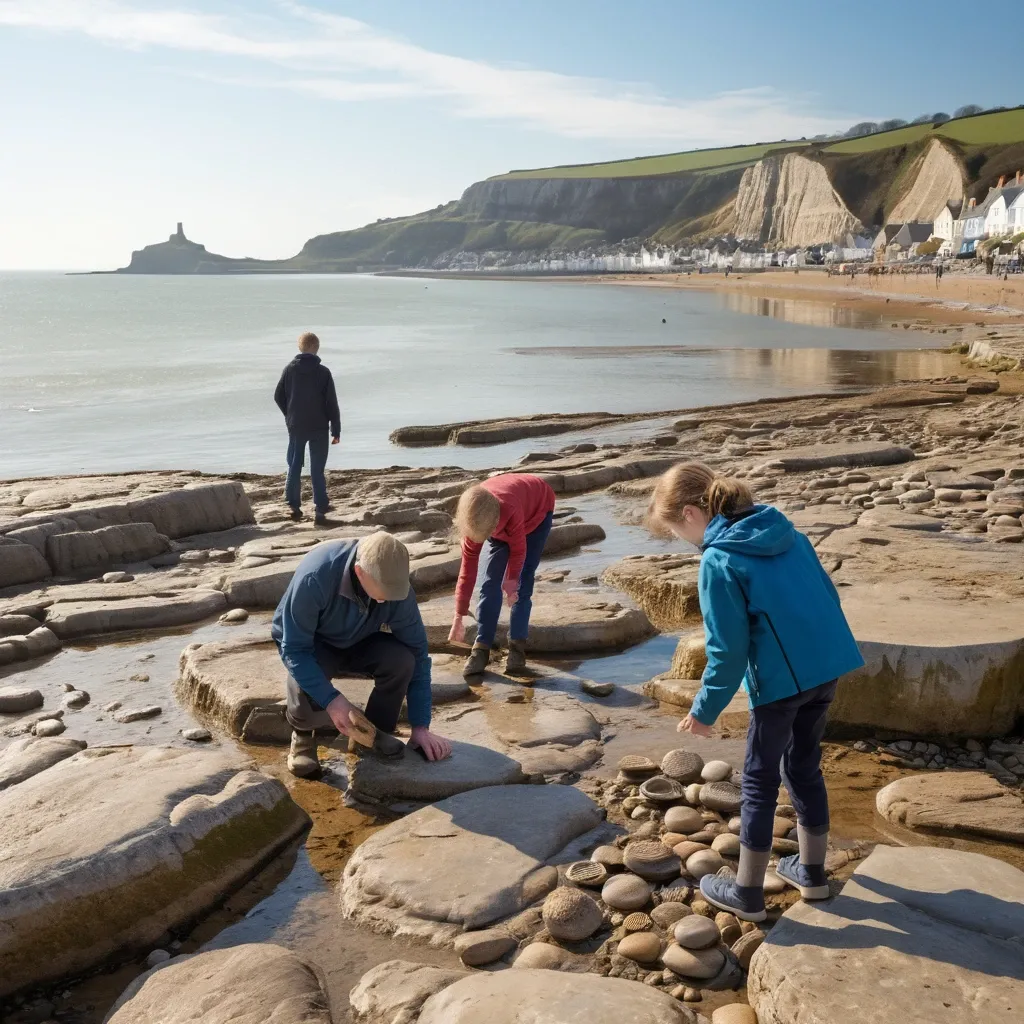
Why is Lyme Regis Famous for Fossils?
Introduction
Lyme Regis is world-renowned as the fossil capital of Britain – a small seaside town with a big claim to fame. Visitors arrive from across the globe to walk its beaches, cliffs, and museum halls, all drawn by the incredible story preserved in stone. But what exactly makes Lyme Regis so famous for fossils, and why does this stretch of coast continue to captivate scientists, collectors, and families today?
Let’s answer the most frequently asked questions about Lyme Regis and its remarkable fossil reputation.
What makes the geology of Lyme Regis so special?
The cliffs around Lyme Regis form part of the Jurassic Coast, England’s only natural UNESCO World Heritage Site. The rocks here date back around 200 million years to the early Jurassic period, when this area lay beneath a warm, shallow sea.
Layers of clay, limestone, and shale – particularly the Blue Lias Formation – preserved the remains of sea creatures that sank to the seabed. Over millions of years, these sediments compacted into stone, perfectly fossilising ammonites, belemnites, and even ancient marine reptiles.
Every winter, natural erosion and stormy tides reveal new fossils, making Lyme Regis a living, evolving fossil site rather than a static museum.
Who was Mary Anning, and why is she important?
Mary Anning (1799–1847) was a self-taught fossil collector and palaeontologist born in Lyme Regis. As a young girl, she began finding fossils along the beaches below her home. Her discoveries transformed our understanding of prehistoric life.
Mary famously unearthed the first complete ichthyosaur and plesiosaur skeletons, and identified the first British pterosaur specimen. Despite limited recognition during her lifetime, she is now celebrated as one of the most influential figures in early palaeontology.
Her legacy is woven into the town – from the Mary Anning statue and museum exhibits to educational trails that inspire new generations to explore the Jurassic Coast.
What types of fossils are found in Lyme Regis?
Fossils from Lyme Regis capture an extraordinary snapshot of life from the early Jurassic seas. The most common finds include:
Ammonites: spiral-shaped shells that serve as the area’s fossil icon.
Belemnites: bullet-like remains of ancient squid-like creatures.
Ichthyosaurs and plesiosaurs: marine reptiles that dominated Jurassic waters.
Fish, crustaceans, and plant fossils occasionally preserved in fine detail within the Blue Lias.
These fossils aren’t just beautiful – they offer scientists insights into evolution, climate, and life in a long-vanished ecosystem.
Where are the best places to see fossils in Lyme Regis?
Visitors can explore several excellent fossil-rich sites and attractions:
Monmouth Beach – famous for its ammonite pavement and regularly exposed fossils.
Church Cliff Beach – known for smaller finds and guided fossil walks.
Lyme Regis Museum – built on Mary Anning’s former home, showcasing her discoveries and the area’s geology.
Dinosaurland Fossil Museum – home to thousands of fossils, minerals, and local specimens.
Guided fossil walks led by local experts are highly recommended for safety and success – especially after winter storms when cliff falls reveal new specimens.
Is it still possible to find fossils today?
Yes – fossil hunting in Lyme Regis remains one of the town’s biggest draws. Visitors of all ages regularly find ammonites or belemnites along the beaches. However, collecting from the cliffs is both dangerous and illegal. Fossils that naturally fall to the beach may be kept in most cases, though it’s important to respect safety zones and local conservation rules.
This balance between accessibility and protection ensures that Lyme Regis continues to provide new scientific discoveries while preserving its fragile coastal environment.
(For more detail, see your existing content on fossil hunting rules and equipment.)
Why is Lyme Regis still so important to science?
Lyme Regis offers a unique window into the Jurassic period. The constant erosion of the cliffs reveals new fossils each year, creating a living laboratory for palaeontologists. Many groundbreaking studies on marine reptiles and ancient ecosystems trace their roots back to specimens collected here.
The combination of active erosion, rich fossil layers, and historical context makes Lyme Regis one of the most scientifically valuable fossil sites in the world.
A lasting legacy
The fame of Lyme Regis isn’t just about the fossils themselves – it’s about the story they tell. From Mary Anning’s groundbreaking work to the families who still explore the beaches today, the town embodies a blend of science, history, and discovery.
Every visit adds a new chapter to that story. Whether you leave with an ammonite in your pocket or simply memories of the Jurassic cliffs, Lyme Regis offers a timeless connection to Earth’s distant past.
Further Reading:
The Ultimate Guide To Fossil Hunting In Lyme Regis
Is Fossil Hunting Legal In Dorset? Rules & Tips

